
Retro computing with a touch of modern and the home for all things, retroCombs (aka Steven Combs).
Disclosure Statement: When you click on links to various merchants on this site and make a purchase, this can result in this site earning a commission. Affiliate programs and affiliations include, but are not limited to Amazon, the eBay Partner Network, and/or others.

The First Commodore Joystick: VIC-1311
by Steven B. Combs, Ph.D.
Welcome to a tale woven with the threads of rivalry. A competition that unfolds in the early 1980s, vying for the allegiance of 8-bit gaming enthusiasts. But this contest doesn’t involve video consoles or computers. It’s a tale of a joystick that ignited a legal action by one of the manufacturer’s fiercest competitors. Our journey commences with none other than the $10 (in 1982 money) Commodore VIC-20 (1311) Joystick.

Table of Contents
- Support the Blog and Channel
- Companion YouTube Video
- Video Errata
- Links
- Commodore VIC 1311 Joystick
- My Brush with Atari Joystick IP
- Commodore 1311 Joystick
- My New Logo
- Join the Fun
Support the Blog and Channel
Check out the supporters page to learn about my amazing supporters and how you can join our community.
Companion YouTube Video
Title: The Controversial History of the Commodore VIC 1311 Joystick!
Video Errata
None as of 2023-08-21.
Links
Disclosure Statement: When you click on links to various merchants on this site and make a purchase, this can result in this site earning a commission. Affiliate programs and affiliations may include, but are not limited to Amazon and the eBay Partner Network.
- Hyperkin RetroN 77
- Hyperkin Ranger Controller
- Hyperkin Trooper Controller
Commodore VIC 1311 Joystick
The VIC 1311 joystick, the first joystick to use the 1311 nomenclature, was released in 1981 as a gaming peripheral for the newly released Commodore VIC-20 personal computer.
As you look at the joystick, notice anything, familiar?
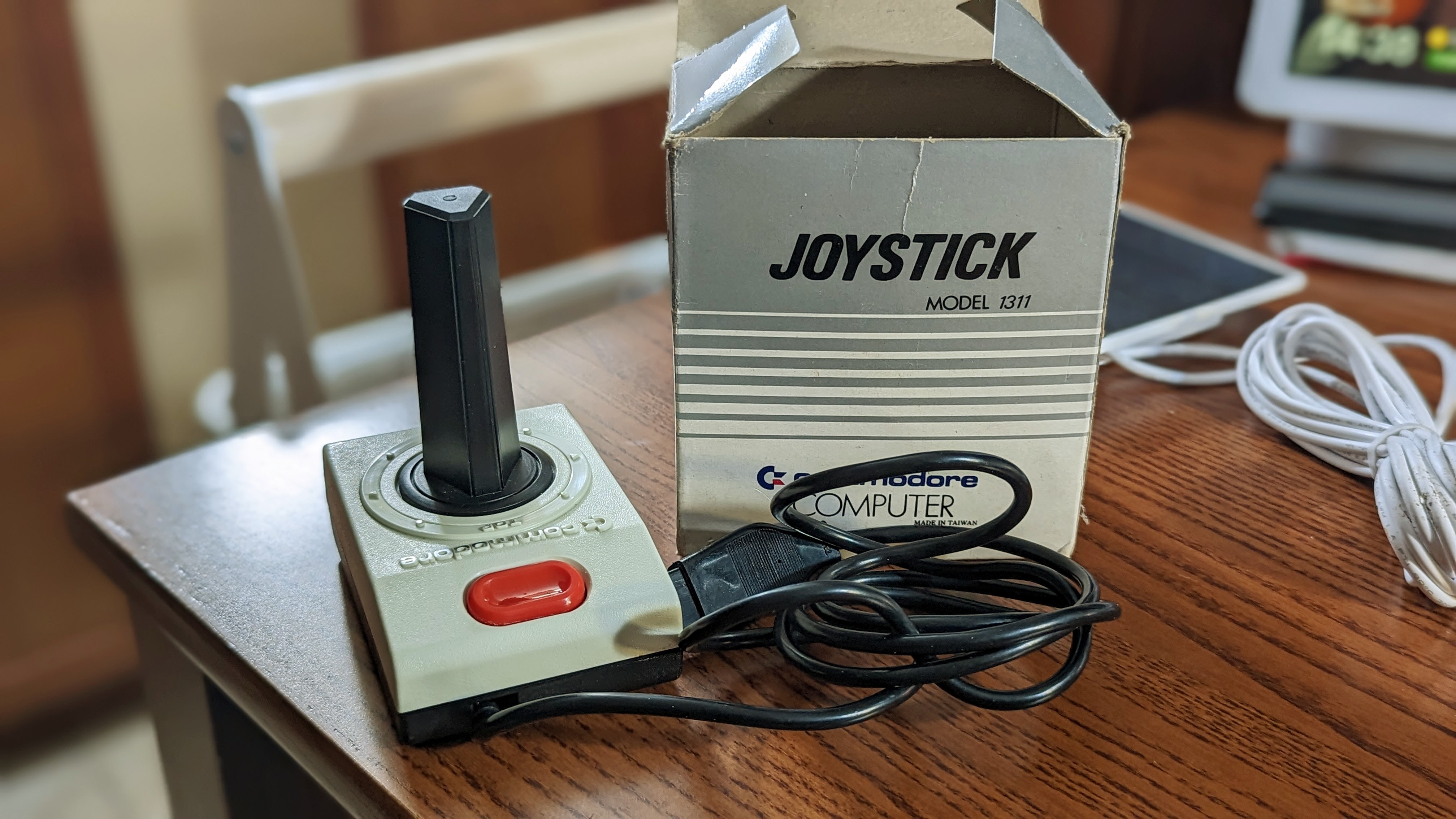
It’s evident that the Commodore VIC 1311 joystick was a clone of the Atari Steve Bristow designed CX10 that debuted with the original Atari 2600 in 1977. The CX10 used springs and contact switches and was manufactured for a year before it received a cost reduction redesign, the CX40 created by designer James C. Asher.
So who designed the Commodore VIC 1311? I think we can credit Steve Bristow for the exterior design and James Asher for the internals. But they weren’t Commodore employees. So what happened? Who signed off on this blatant intellectual property rip off? Who knows? I wanted to but even reaching out to Bil Herd and the Commodore International Historical Society led to a dead end. If you have information that can lead us to the individual responsible for the joystick replication, please leave a comment. Some proof would be nice.
The joystick’s form factor is so similar to the Atari 2600 CX40 joystick that it makes on wonder if Commodore didn’t use the same manufacturer or steal some molds (that just conjecture on my part). When you compare the Commodore VIC 1311 with the CX40 for the Atari XE series computer, that was a grey color instead of the standard black, things get even more oddly similar.
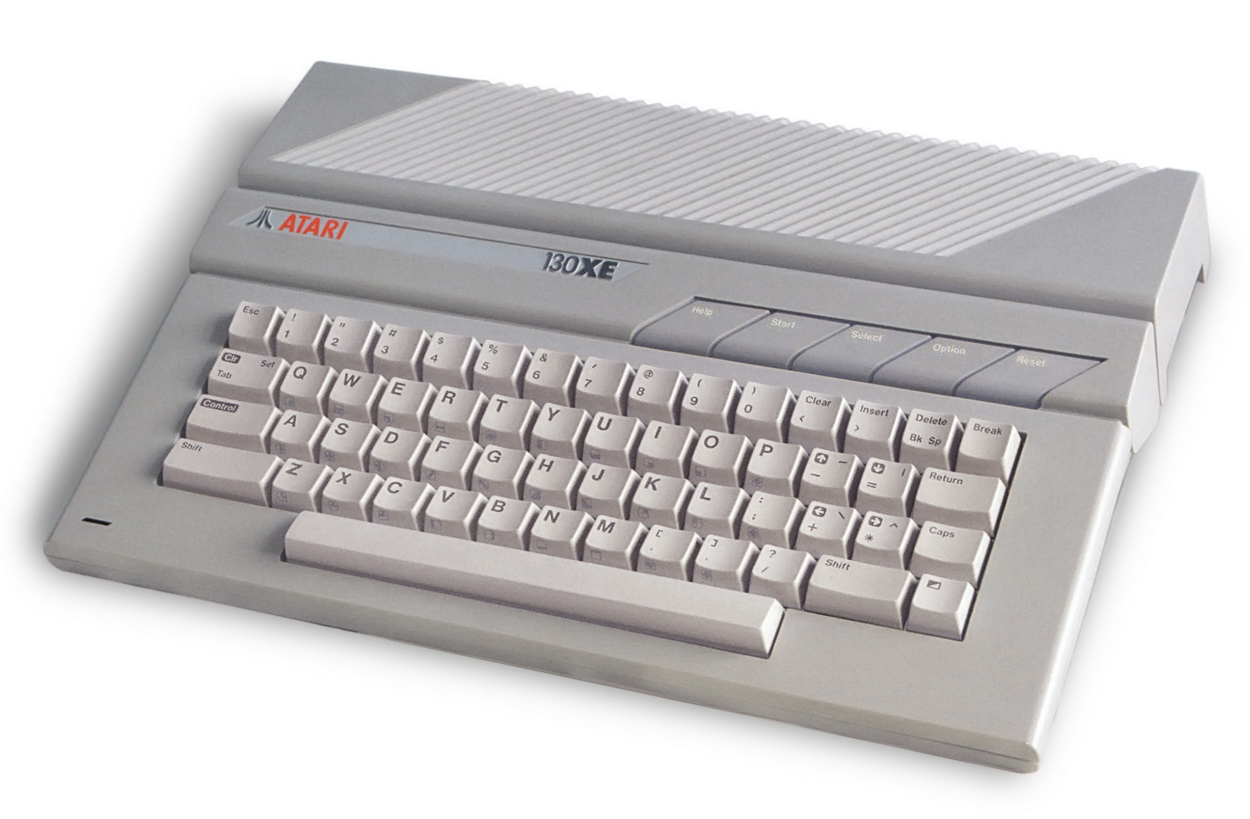
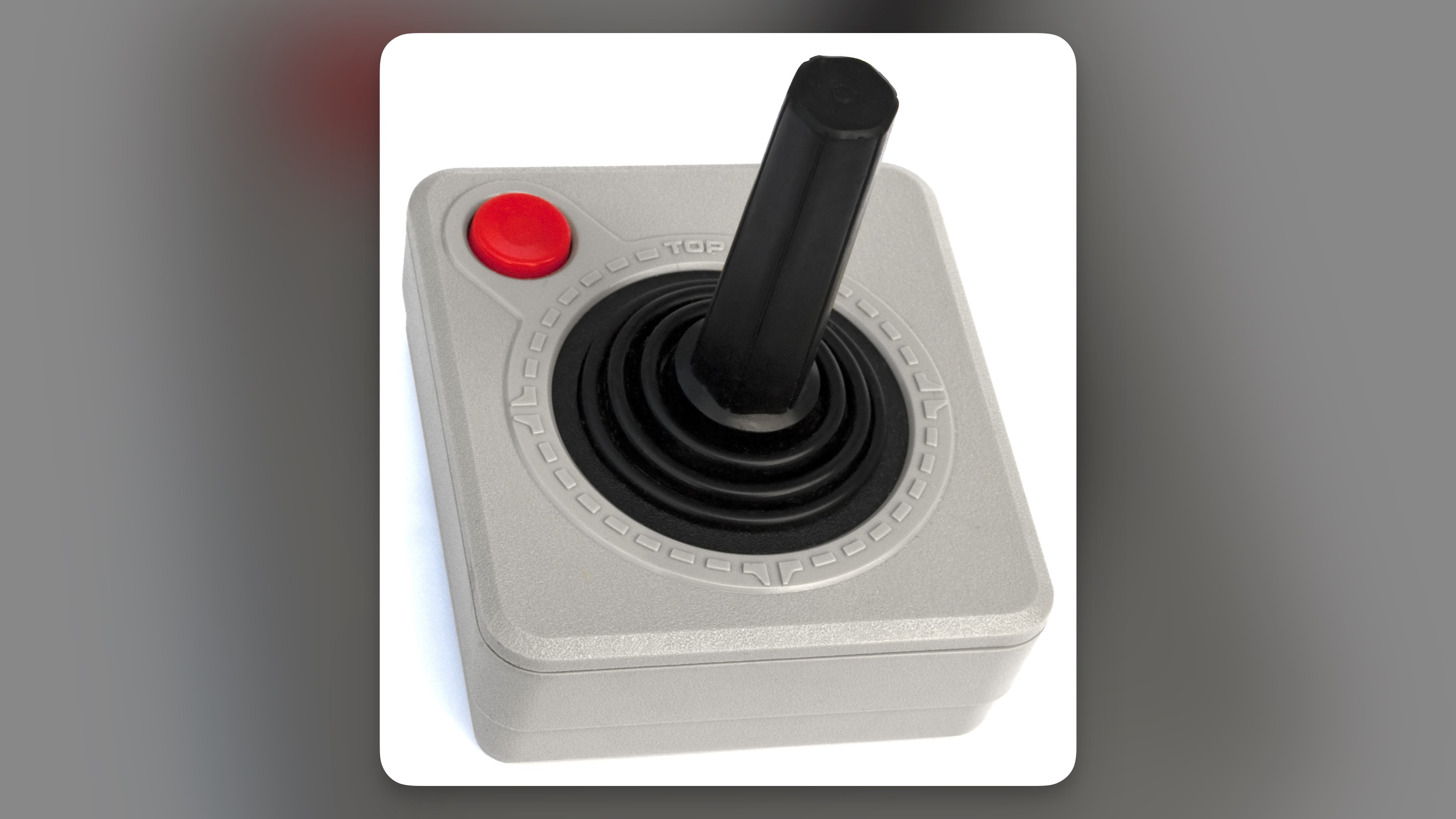
Since the Commodore VIC-20 used the same 9-pin DIN connector found on the Atari 2600, joysticks were interchangeable between devices. One of the few hardware “standards” found on many 8-bit computers.
Personally, the Atari CX40 joystick was the first joystick I used on my VIC-20. We owned the Sears Video Arcade (the Sears version of the Atari 2600) and I would move a controller back and forth between devices. Probably like many who owned both devices, I didn’t purchase another joystick.
So before you think that Commodore pulled one over the eyes of Commodore, “Au contraire mon frere”. Atari filed a lawsuit on October 11, 1982 against Commodore. Here’s a lawsuit announcement article from the October 14, 1982 Philadelphia Inquirer:
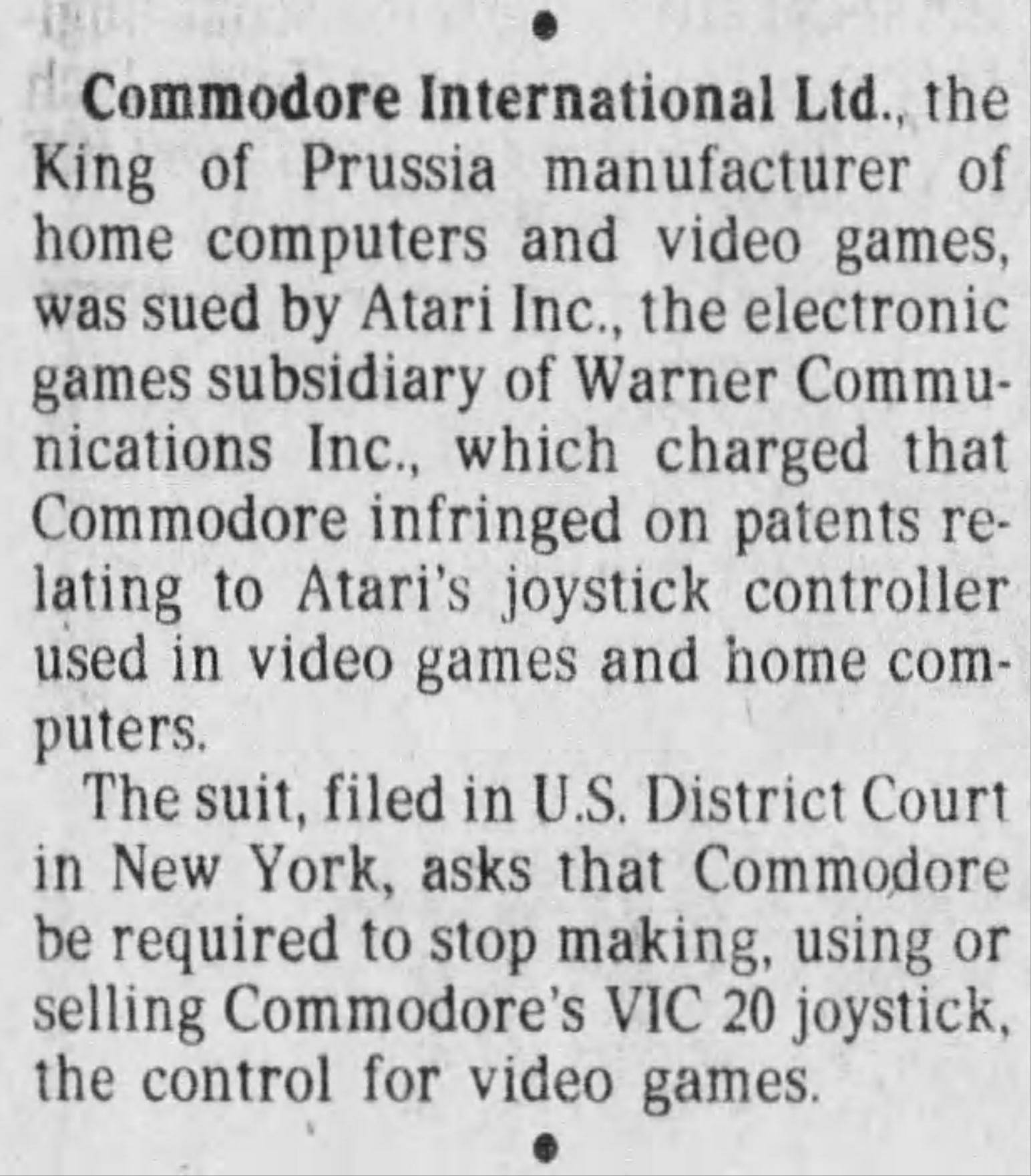
And here’s a longer article from the November 9, 1982 edition of the New York Times:
Atari Inc. said it had won a temporary injunction against Commodore Business Machines that prevents Commodore from making and selling joystick controllers for video games and home computers that are imitations of the one made by Atari. The ruling affects the joystick made by Commodore for its popular VIC-20 home computer.
Joysticks are the hand-held box used to operate video games.
It’s fun that back in 1982, the New York Times felt they had to explain joysticks.
A preliminary injunction was granted by Judge Richard Owen in the Federal District Court for the Southern District of New York. A Commodore spokesman, reached at the company’s offices in Pennsylvania, said company officials were returning from the annual meeting in New York and thus were not available for comment. The injunction may not pose much threat to VIC-20 sales, however, because that computer can use the Atari joysticks for game playing.
Atari, the leading maker of home video games, filed suit Oct. 11, contending that the Commodore joystick infringed on its patents. Atari said the Commodore joystick looked like the Atari product except for the color, yet had some flaws that would cause it to break prematurely. Atari said it did not want customers to associate the broken joysticks with Atari.
The joystick is notorious for the flaws mentioned and that’s the crux of the matter. Users in the early 1980s could easily assume that the joystick was created by Atari for Commodore given the similar appearance.
Finally, the trade rag Infoworld, covered the story in their November 1982 edition.
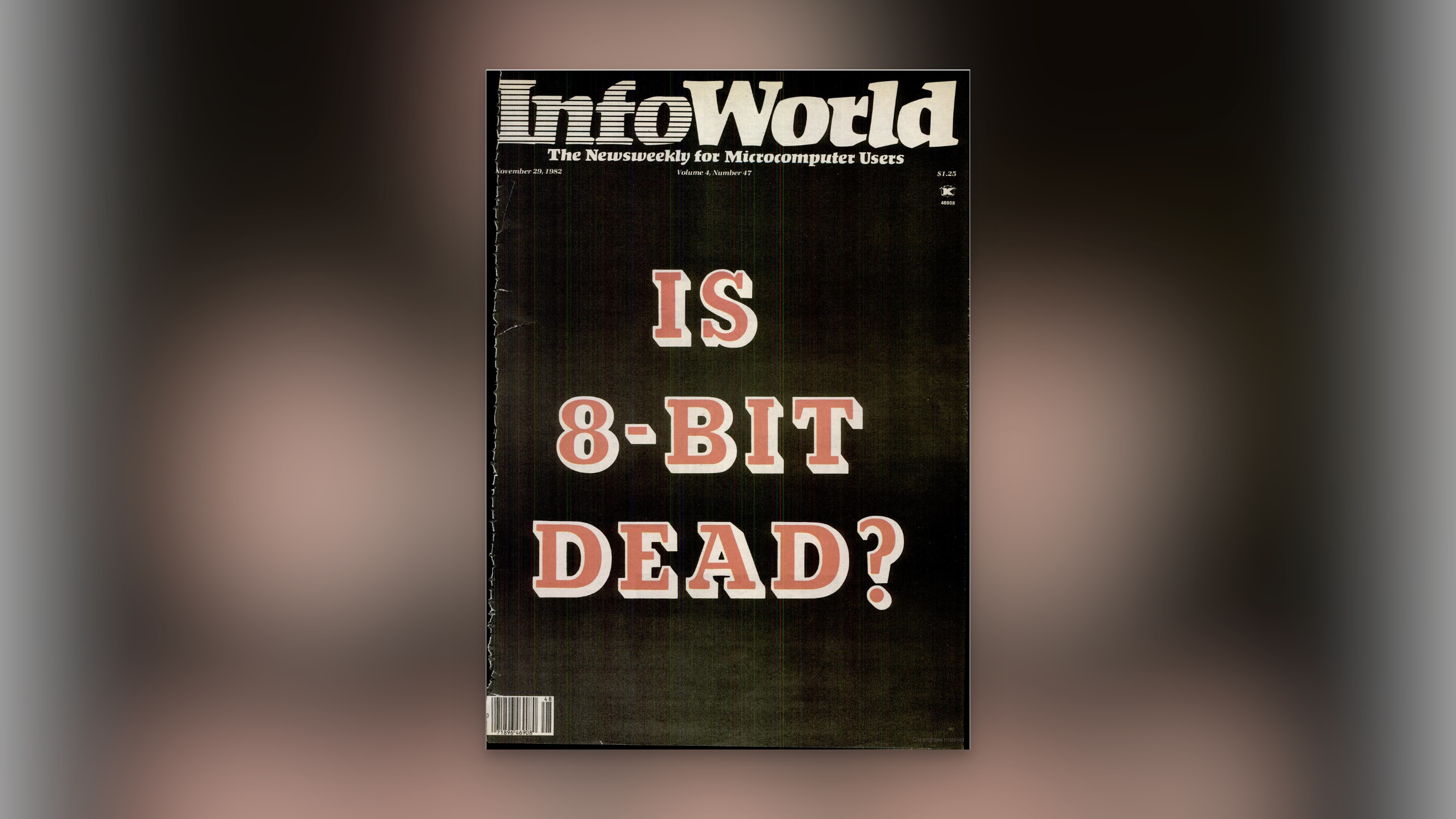
Atari wins joystick battle: Atari, Inc., recently won a preliminary injunction against Commodore Business Machines, Inc., in a case involving Commodore’s manufacture and sale of an “imitation” Atari joy-stick controller for its VIC 20 home computer.
Atari had filed a lawsuit October 11, 1982, in which it claimed that Commodore infringed on Atari’s patents covering the joystick that Atari sells for its video-computer system and home-computer products.
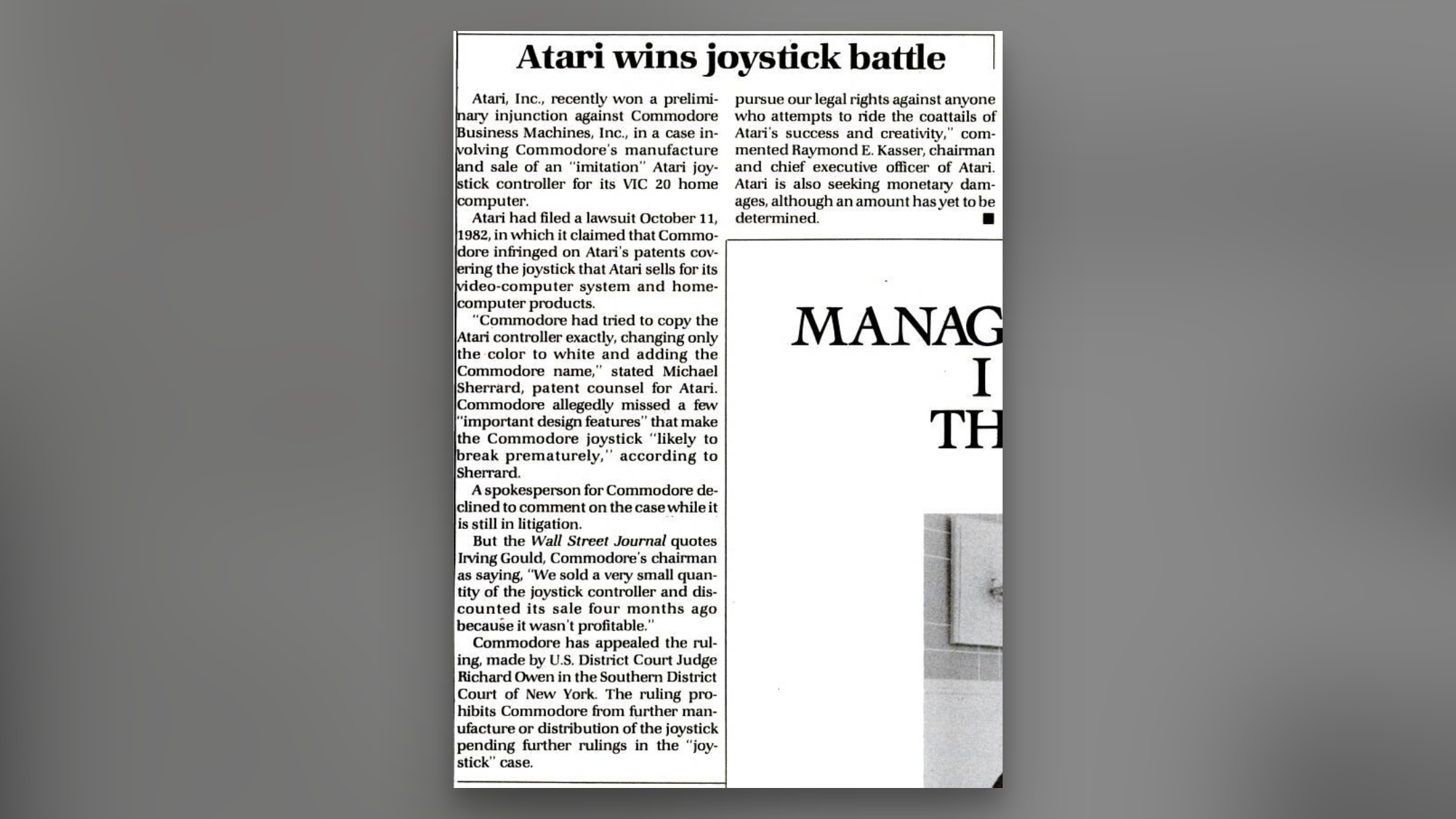
“Commodore had tried to copy the Atari controller exactly, changing only the color to white and adding the Commodore name,” stated Michael Sherrard, patent counsel for Atari.
Commodore allegedly missed a few “important design features” that make the Commodore joystick “likely to break prematurely,” according to Sherrard.
A spokesperson for Commodore declined to comment on the case while it is still in litigation. But the Wall Street Journal quotes Irving Gould, Commodore’s chairman as saying, “We sold a very small quantity of the joystick controller and discounted its sale four months ago because it wasn’t profitable.”
Commodore has appealed the ruling, made by U.S. District Court Judge Richard Owen in the Southern District Court of New York. The ruling prohibits Commodore from further manufacture or distribution of the joystick pending further rulings in the “joystick” case.
We will pursue our legal rights against anyone who attempts to ride the coattails of Atari’s success and creativity,” commented Raymond E. Kasser, chairman and chief executive officer of Atari. Atari is also seeking monetary damages, although an amount has yet to be determined.
I was unable to find any indication that money changed hands in this case but I think can assume that occured.
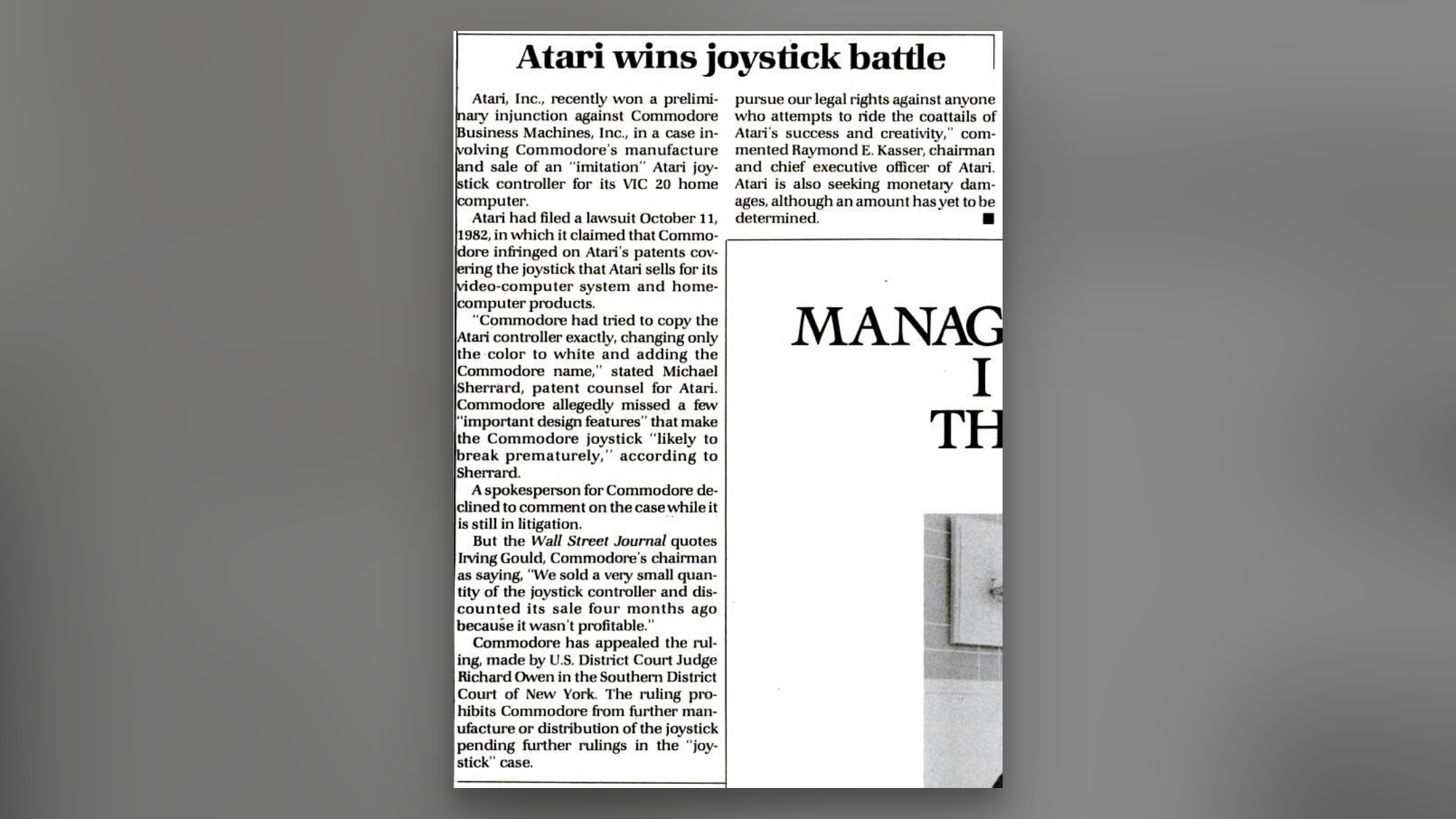
It is rumored that Commodore was ordered to destroy all remaining inventory of this joystick. I’ve not evidence that supports this claim and since you can still find these joysticks on eBay, I have to assume the stock was sold. But boy, are these pricey.

I did find this memo sent out by Richard Blumenthal who was Commodore’s corporate counsel. According to Dave McMurtrie on the Commodore International Historical Society Facebook Group:
Michael Sherrard, one of Atari’s patent lawyers, filed suit against Commodore on October 11, 1982 for patent infringement, claiming that Commodore’s joystick was an exact copy of Atari’s. A judge agreed and Commodore was enjoined from selling the Atari joystick clones…The internal memo is from the personal collection of Michael Tomczyk.
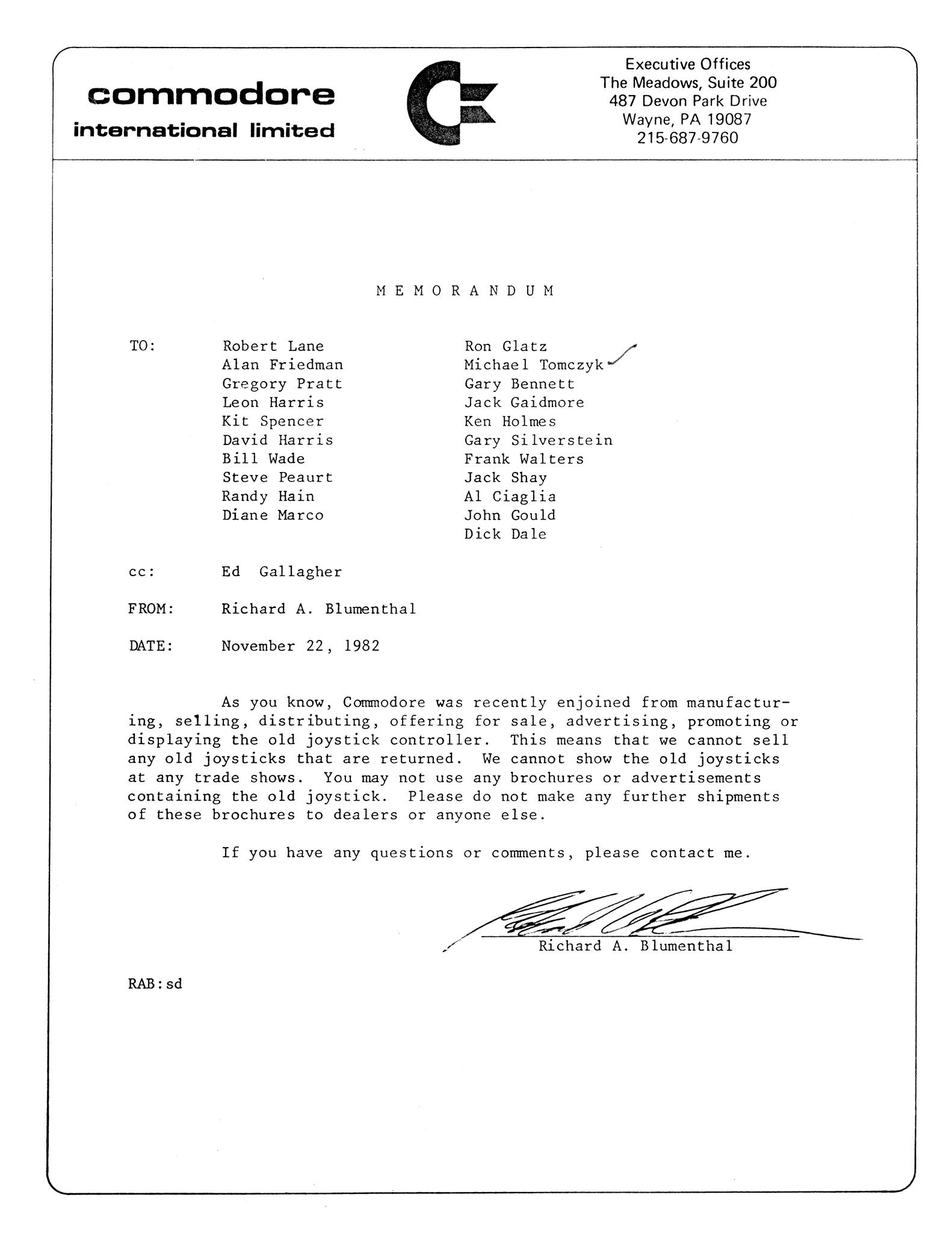
And there’s even a clone of a clone as you can see in this image that looks just like the Commodore clone of the Atari 2600 only sans the Commodore logo and the words, JOY STICK.
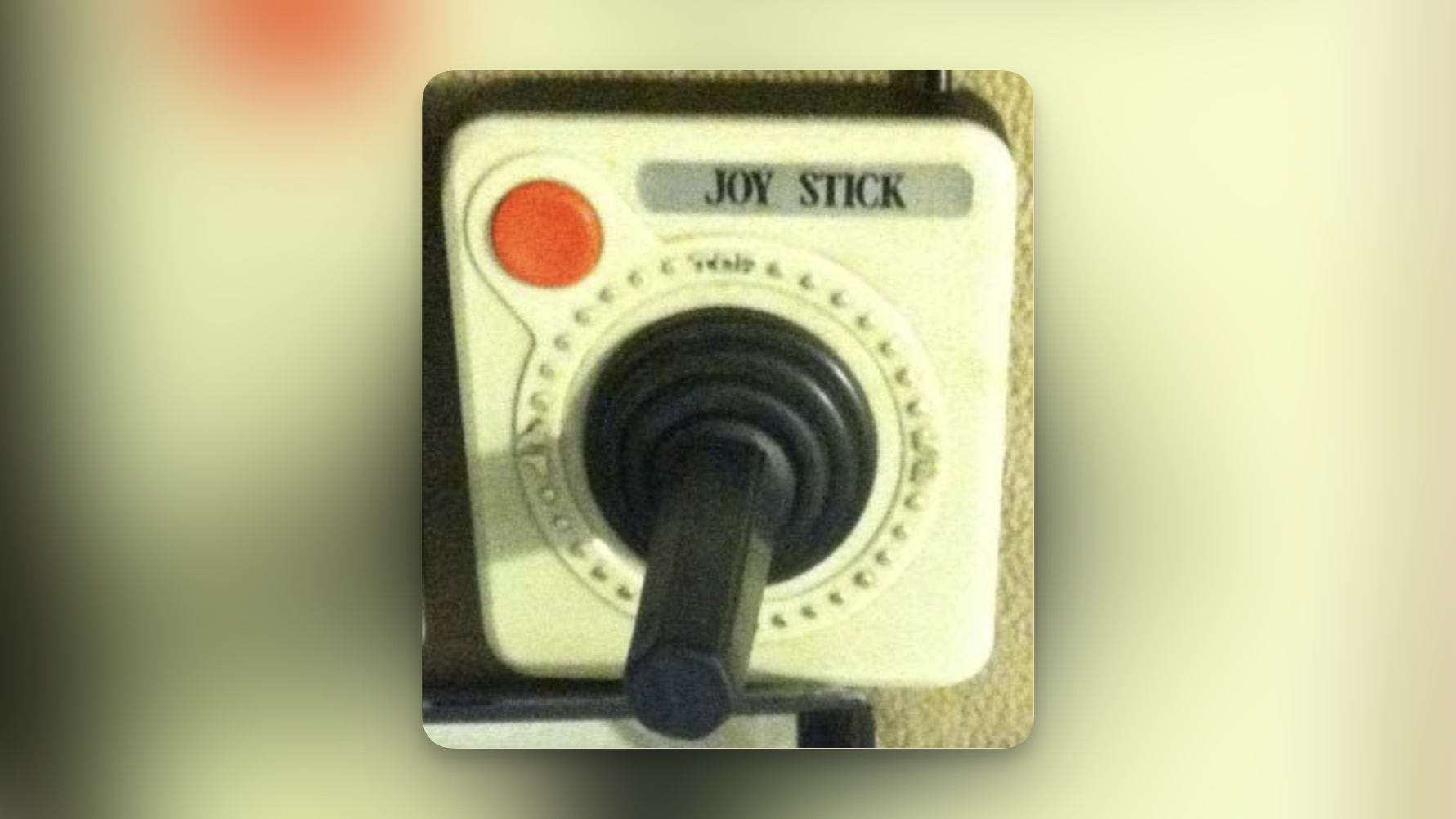
The Atari Compendium lists this one as manufacturer unknown. If Commodore did find a manufacturer in Taiwan to recreate the Atari joystick, did that same company decide to sell their recreation? If you have one of these joysticks, please reach out to me.

My Brush with Atari Joystick IP
In a strange twist of fate, I too found myself on the wrong end of Atari’s intellectual property when I tried to use a variation of the Atari 2600 joystick for my original logo. Here’s my original logo:

Instead of researching this after the fact, I should have done my due diligence. If I had, I would have seen that Atari is still protecting their joystick design and IP as shown in this Bloomberg Law article from January 19, 2021.

Interestingly, it seems that my favorite retro recreation, the Hyperkin Trooper, was also a target but a settlement was made. My guess is that Atari gets a cut of each Hyperkin sale since Troopers are still available.
How did I know Atari was protective of their Atari 2600 joystick IP? Check out this email from Spreadshop when I tried to have merch for sale with the original logo:
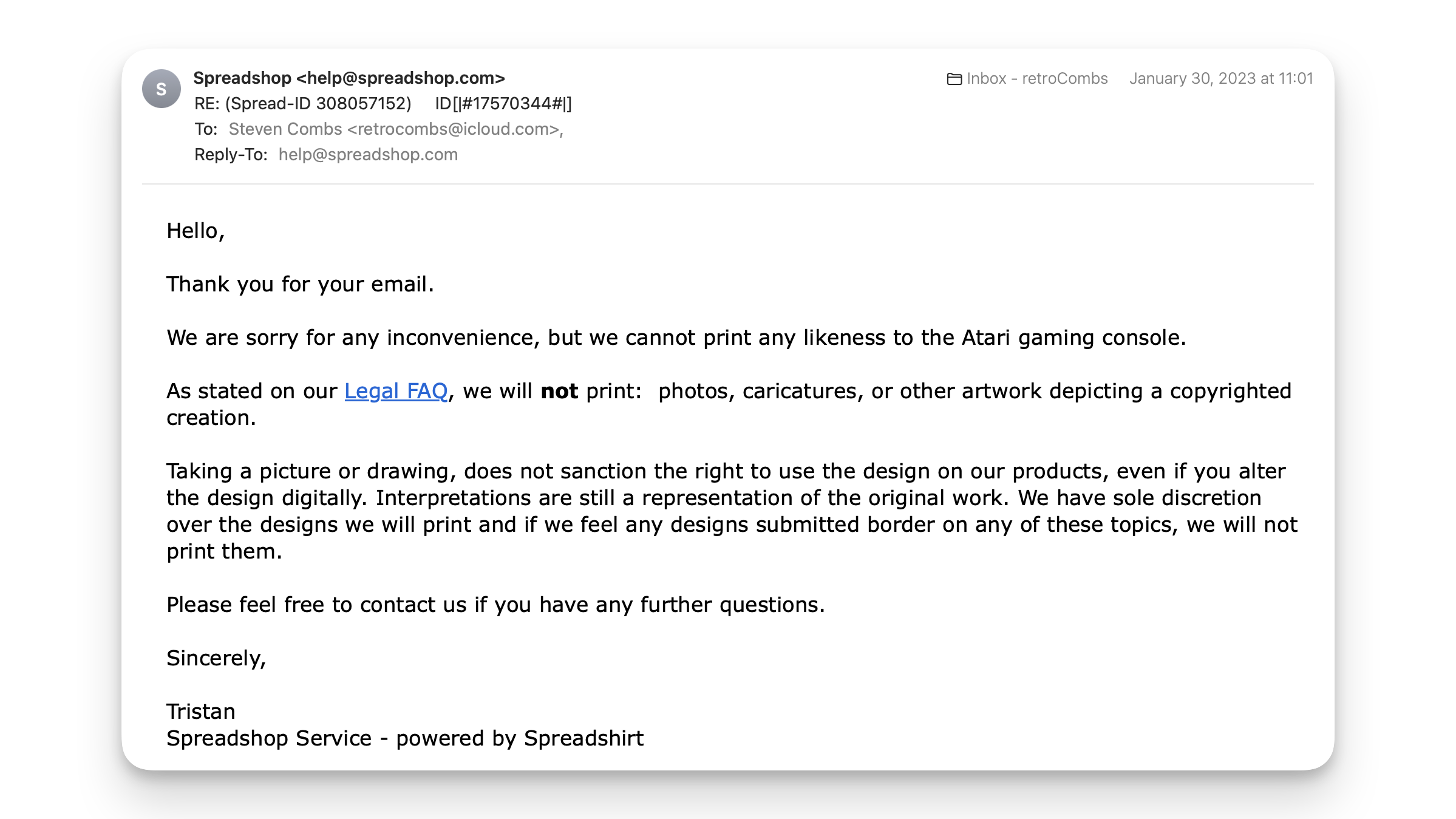
This continued protection of Atari joystick design led me to modify my logo based on another joystick no longer under protection, the Commodore 1311.
Commodore 1311 Joystick
After the VIC-20 Joystick fiasco, Commodore released their own design, the Commodore 1311. Who designed the 1311 continues to remain a mystery. Again, neither Bil Herd nor the Commodore International Historical Society was able to help me find out who designed this 8-bit controller. I’d love to know because while the functionality wasn’t great, I love the look of this controller.

The new design includes:
- smaller base
- button in the middle of the upper base so it can be used by both right and left hand users
- VIC-20 Computer colors
- A __ foot cable
- a triangular profile control stick
- Commodore branding
- directional indicators
- Cost was $10
This joystick was also controversial, but not for the same reasons as its predecessor. This one was notorious for being a horrible joystick. I’ve used it and would have to concur, so surely no one would want to clone this design. Right? Wrong!
According to the Atari Compendium A Taiwan variant of the Commodore 1311 joystick found its way to the market but opted for a cool blue button rather than the red one found on the Commodore 1311 Joystick. It was also suggested that this is the same manufacturer Commodore used, but they released their own version.

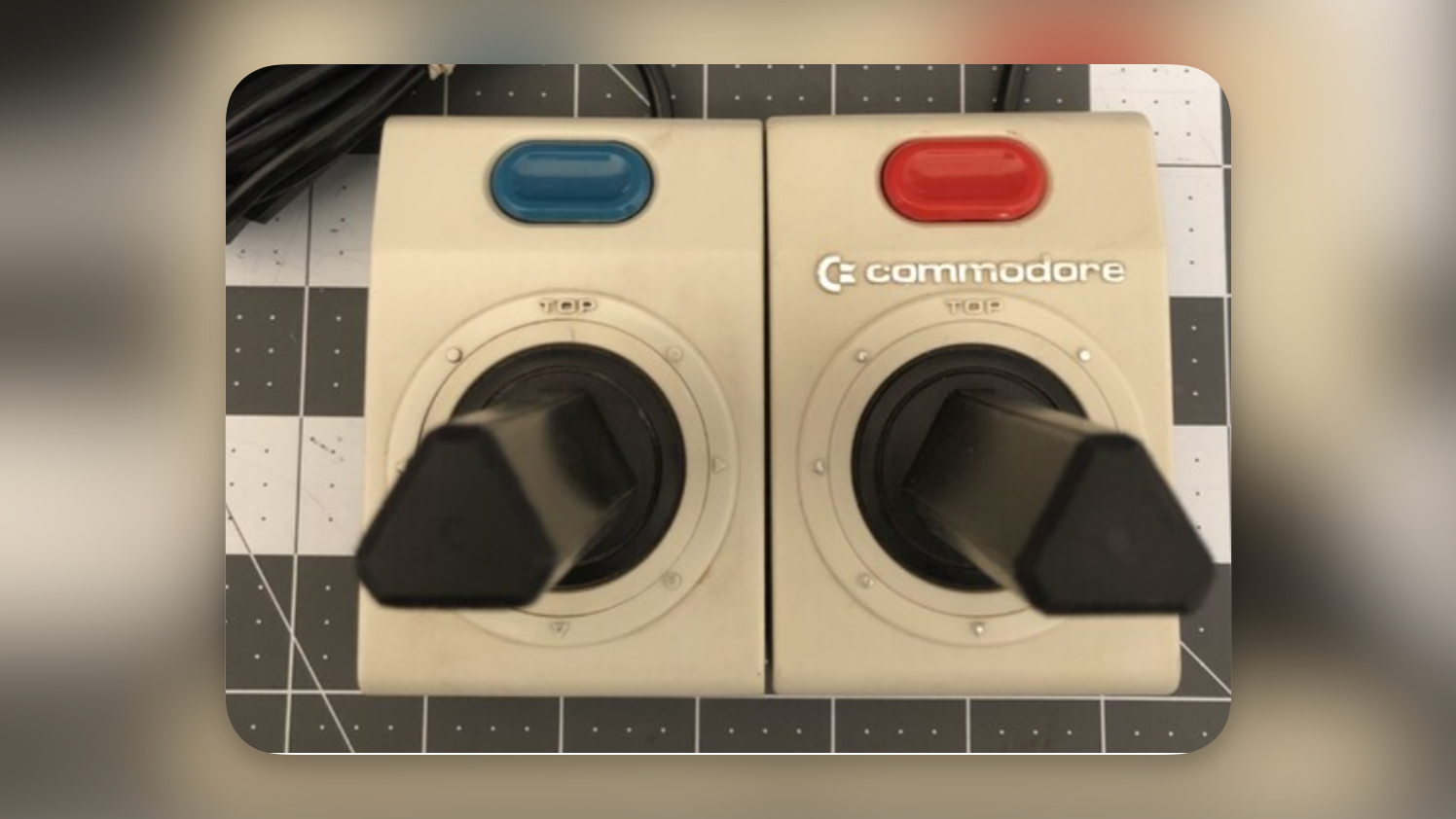
My New Logo
And this brings me back to my logo. While the Commodore 1311 joystick may be horrible to use and breaks, I can’t help myself. I love the look and created the new retroCombs logo below:

And my viewers like it, they even helped me refine it! Several of them commented on my Discord that this new logo was a better representation of my content since I have a heavy focus on Commodore computers and the MEGA≡65 rather than Atari. So what about my Spreadshop store? Yep, you can find this logo on shirts, cups, and hats. If you like the look of this logo, get your merch here.
Join the Fun
Don’t miss the retro-computing fun. SUBSCRIBE to my YouTube channel and check out my other posts.
Help make this content better! Leave your comments, corrections, additions, and thoughts in the comments below. You can email me at retrocombs@icloud.com. Thanks for reading and if so inclined, please let others know about the blog using the hashtag #retroCombs.
🕹️ retroCombs, OUT!